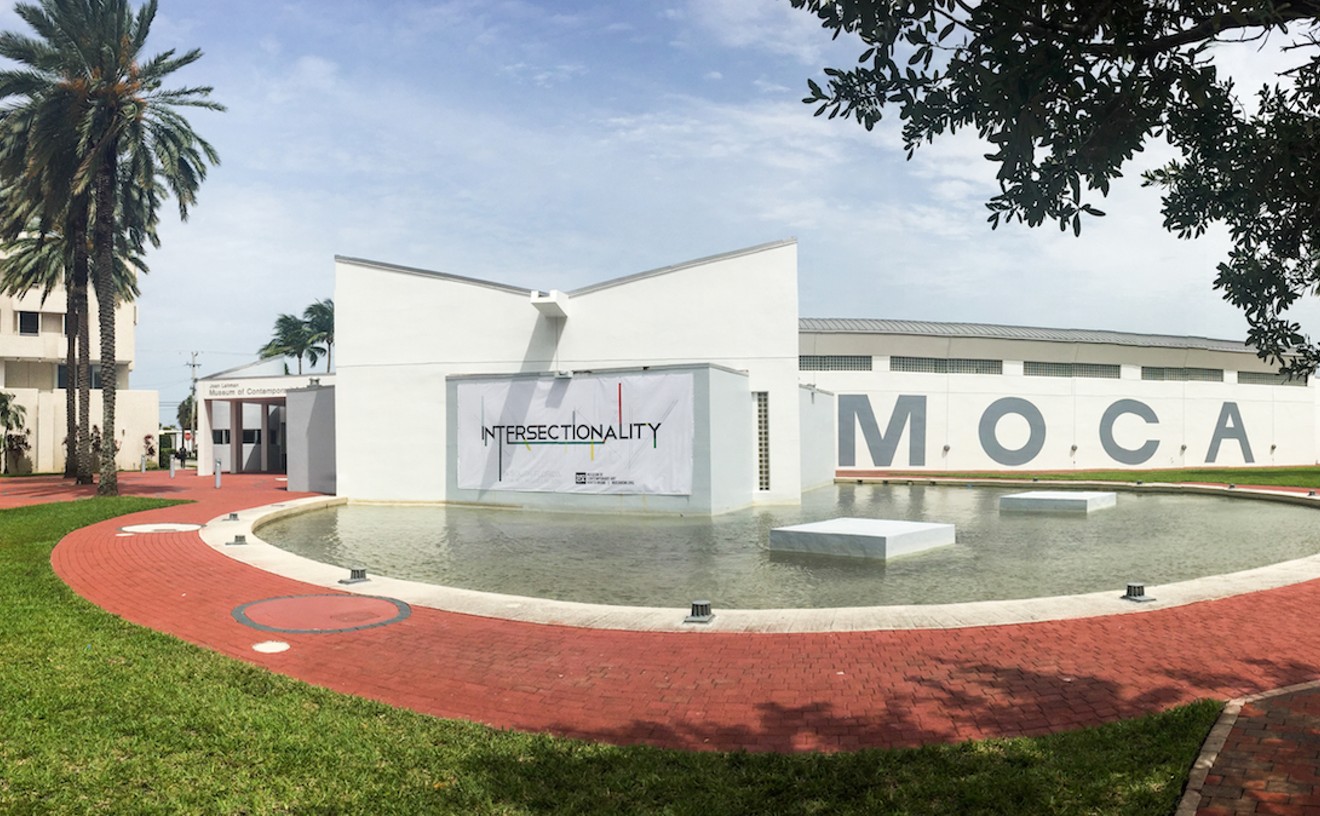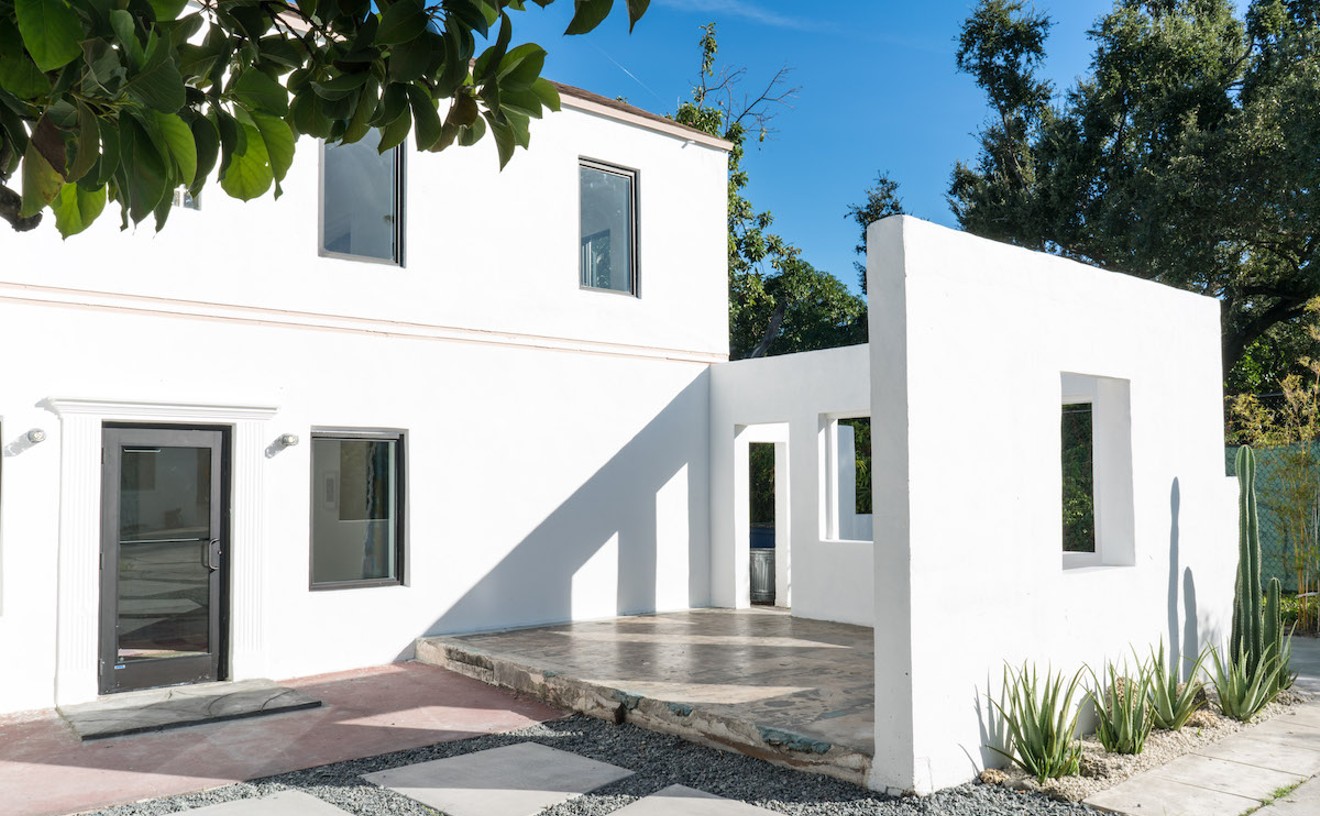As far as local dealers go, Nina Johnson has earned her spurs on the local scene as a tireless dynamo and community activist. Her gallery has become a favorite hub for art lovers searching for provocative exhibitions that linger in the mind long after one leaves her lively, shape-shifting space. Since opening its doors in November 2007, Diet has become known for its modest yet focused stable of emerging and mid-career artists as well as an invitational program for international artists. Johnson has also organized lectures by visiting curators and critics, and publishes an electronic newsletter featuring reviews and interviews written by local artists on Miami's booming scene. Best of all, Johnson is among the rare handful of local dealers confident enough to give her artists free run of her space without waffling on the commercial necessity of hewing to the bottom line. Her shows are impeccably curated and often among the most discussed after the monthly Wynwood crawls. Among recent standouts were Maria Jose Arjona's beguiling performance marathon, "Remember to Remember," and Andrew Mowbray's witty "Tempest Prognosticator," in which the artist turned himself into a human weathervane. This past December, Brian Burkhardt transformed Diet into a veritable mad scientist's project, installing a sprawling bio-dome-cum-studio that housed samples of the hybrid species of plants and insects he has created during his career. For many people suffering from the bloated offerings that typically cramp the bowels during Wynwood's monthly openings, Johnson has proven a deft hand at trimming the fat from the bone.
Best Art Gallery
Gallery Diet
Best Political Coup
Dennis Moss elected county commission chairman
For years, the county commission has been controlled by a certain block of rabidly pro-growth commissioners who are quite cozy with special interests. That all changed when Dennis Moss built a more moderate coalition that got him elected as chairman. Moss, whose District 9 is a geographically sprawling chunk of Southern Dade, then set forth assigning committee chairs. Left out in the cold was Commissioner Natacha Seijas, whose derrière was so used to sitting in a chairman's spot it almost seemed like a foregone conclusion she'd be in charge of something. Of course, with growth at a standstill thanks to the economic slump, Seijas and her ilk seem sort of aimless anyway.
Best Art Exhibit
"Sympathy for the Devil: Art and Rock and Roll Since 1967"

This nearly pitch-perfect exhibition, organized by curator Dominic Molon over a five-year span, explored the deep-rooted and primal alliances between rebellious spirits haunting both the sonic and visual realms. It featured more than 100 paintings, drawings, installations, and videos by 56 artists and artist collectives. The show was organized by the Museum of Contemporary Art in Chicago, where it drew stadium-size crowds. MoCA's turnstile numbers skyrocketed as well. Although some knuckleheads wailed about holes in the exhibition's version of rock history, you couldn't leave without giving this devil his due.
- 770 NE 125th St., North Miami, 33161 Map
- 305-893-6211
- mocanomi.org
Best Quote
"I won't be punked."
"I won't be punked," Florida Congresswoman Ileana Ros-Lehtinen proclaimed.
After all, former vice presidential candidate Sarah Palin was duped by a radio station into taking a call from a fake French President Nicolas Sarkozy. So when President-elect Barack Obama called to congratulate Ros-Lehtinen on her re-election victory — a move he hoped would build a bridge of nonpartisanship with the Republican congresswoman — well, Ileana would not be punked like Sarah was.
"You are either very gracious to reach out in such a bipartisan manner or had run out of folks to call if you are truly calling me," Ros-Lehtinen told the prankster. "And Saturday Night Live could use a good Obama impersonator like you." And then she hung up. Shortly afterward, she received a call from Rahm Emanuel, telling her that she had just hung up on the president. Again, Ros-Lehtinen would not be fooled! And hung up. Again. Problem is, it really was President-elect Obama and his chief of staff calling. It wasn't until a fellow member of the U.S. House of Representatives, Howard Berman, called to assure her that she was not the target of a prank that Ros-Lehtinen finally took the call from the POTUS. After all, who the hell does impressions of Howard Berman?
Best Political Comeback
The Diaz-Balart brothers
It was right there in black-and-white, on the cover of your Miami New Times: "End of the Diaz-Balart Dynasty." Just weeks before election night, scores of polls showed both Mario and Lincoln — Cuban-American icons and Miami's reps in Washington for years — trailing their Democratic challengers. Obama-mentum was sweeping the nation, ripping Red State seats out from under longtime untouchables. Young Cuban-Americans, everyone said, were ready for a change and didn't feel tied to the Republican Party the way their parents did.
Then November 4 rolled around. Like Castro-hating, earmark-eating zombies, the Diaz-Balarts rose from the political graveyard and dominated the polls. Lincoln won 58-42 over former Hialeah Mayor Raul Martinez. Mario smacked down wonder boy Joe Garcia by four points. And the dynasty, for another two years, lives on.
Best Website to Discover the Miami Art Scene
wetheatproject.com
Wet Heat offers an insightful take on a critical moment for our city and the cultural engine driving it. During the past 18 months, Bill Bilowit and Grela Orihuela, originators of the popular site, have been producing documentary content chronicling Miami's new identity as a global arts destination and the players fueling its rise. They began screening the project during last December 2008's Art Basel confab. The arts confluence unfolding on their doorstep and the opportunity to chronicle living history is the Ariadne's thread that binds these films. "Each edition is an in-depth, cinéma vérité, behind-the-scenes profile of a Miami-based artist at a milestone moment in their career," Bilowit states. He and Orihuela recently wrapped filming locals Bert Rodriguez and Hernan Bas for hourlong documentaries respectively, excerpts of which can be viewed online. The documentaries shadow the artists in their studios and at art openings and fairs, and feature interviews with dealers, collectors, critics, and high-art honchos, conveying their development as artists as well as telling the story of Miami's dramatic upswing.
Best Barely Legal Art Blog
MSGCartel.com
Miami has a graffiti style all its own — wild, imaginative, and full of tropical color. MSG Cartel claims it's only an "online exhibition" of graffiti, implying its contributors are simply admirers of that particular street art. But browse the site — named for graffiti crew Miami Style Gods — for a while and it becomes clear it's operated by, and is a meeting ground for, Miami's most prolific illegal artists, from Crome and Crook to Atomik. The photos posted constitute a de facto hall of fame for some of the most skilled local wall work. After Kendall graffiti artist Merk fell to his death while spray-painting a highway overpass, the blog became a memorial ground. It's a daily updated finger on the pulse of a naturally reclusive subculture.
Best Political Miscalculation
Raul Martinez versus Lincoln Diaz-Balart
For the first time in decades, since before John F. Kennedy allegedly betrayed them, Cuban-Americans in Miami were supposedly ready to accept the Democratic Party into their lives again. Focus groups and studies indicated that Cuban-Americans in Miami wanted the freedom to travel to Cuba and visit relatives, not to mention send them money. Polls showed that, like the rest of America, Cuban-Americans wanted leaders who would focus on fixing the local economy instead of being fixated on toppling Fidel Castro. These were the signs that propelled the Democratic Party to recruit Hialeah's Mayor-for-Life Raul Martinez out of retirement and go after Rep. Lincoln Diaz-Balart's seat. From the get-go, the campaign was billed as the clash of the titans. It was the type of political race made for national television. On one side was Diaz-Balart, a former state prosecutor whose congressional career has been defined by a singular subject — the Cuban embargo. On the other side was Martinez, the charismatic Cuban Democrat who built his legacy running Miami-Dade's second-largest city. The plan seemed perfect. Martinez would siphon votes away from Diaz-Balart's base in Hialeah while clobbering the U.S. representative in Democrat-loving Broward County. Pundits figured Diaz-Balart was in the fight of his political life. They claimed he was in a dead heat with Martinez and the race was too close to call. But everyone underestimated Diaz-Balart, who proved he can still get nasty and dirty to get a victory. Throughout the campaign, Diaz-Balart hammered home Martinez's troubled past, including his indictment on public corruption charges and video footage of the burly Martinez pummeling a smaller man during a street protest. Martinez was unable to thwart the barrage against his character and ended up losing to Diaz-Balart by double digits. So much for those focus groups.
Best Chutzpah
Jeffrey Loria
You know that old saying, "He could sell popsicles to an Eskimo"?
It's officially been revised, as of March 24, 2009, to read: "He could sell taxpayers a $600 million stadium during the worst economic meltdown in modern history."
Jeffrey Loria, owner of the Florida Marlins, put on a clinic in chutzpah this spring when he steamrolled through the city and county commissions with a $634 million deal for a retractable-roof stadium in Little Havana.
All this while the American economy death-spiraled and South Florida sank under a real estate market tanking harder than Dontrelle Willis's career. And best of all, Loria persuaded the council to pay for most of the deal — all but $120 million worth — with taxes.
Loria, who earned his billions selling art, is officially the Rembrandt of chutzpah.
Best Place for Kids to Unleash Their Creativity
Kenan-Flagler Family Discovery Gallery

At the Frost's gorgeous new building, local kids finally have a place to channel their inner van Gogh or Warhol in a setting that invites creativity. This state-of-the-art gallery allows visitors to enjoy interactive activities designed to educate, entertain, and enhance the museum experience. The gallery boasts 13 stations, including the computer-based display "Picture Yourself," where a camera snaps an image of the user's face and reproduces it on a touch screen. Participants can then trace the contours of the face with their fingers and print the finished artwork to take home. And, best of all, entrance to the gallery and museum is free year-round.
- 10975 SW 17th St., Miami, 33199 Map
- 305-348-2890
- frostartmuseum.org






